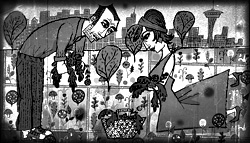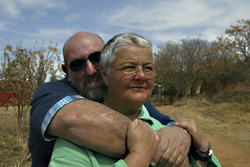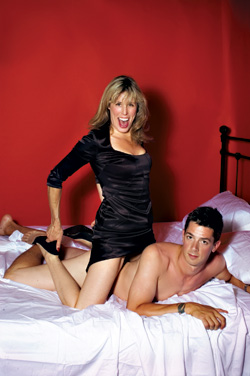Seattleites are particularly blessed when it comes to fresh foods. Beyond the bounty offered at the markets, you can chase salmon or shad roe sets, dig or dive for all manner of shellfish, and pick your own fruits and veggies at more than a dozen farms in King County alone. But you don’t have to drop a bunch of dough on gear or leave a big carbon imprint driving long distances for good eats. There are plenty of edibles available in or near urban areas, if you know where to forage.
On Mercer Island, Linda Urbaniak and her husband, Roger, hunt, fish, and gather a third of the food they eat, and most of it comes from local sources. Both hold down day jobs, but Linda also teaches classes on edible plants while Roger operates a salmon incubator in Bellevue. Linda likes to joke that they’re two of the last true hunter-gatherers. “This is an unbelievably bountiful land,” she says. “The reason the art and culture [of indigenous people] developed so highly was because they didn’t have to spend all their time looking for food.”
Indeed, most Seattleites only have to open their front doors to find something to eat: dandelion greens. Urbaniak likes to toss them with nettles in a salad. “Dandelion greens have a bitterness to them, so they’re best when combined with something not bitter,” she explains.
Nettles can be used in place of spinach—just be sure to cook them long enough to get rid of the stinging compounds in the leaves. According to Urbaniak, nettles can be found in any swampy area, as can cattails, the emerging heads of which can be steamed. Some city parks offer pear or peach trees. Capitol Hill boasts a number of fig trees. When Urbaniak spots a fruiting tree in someone’s yard, she simply knocks on the door and asks for permission to pick. “They almost always say yes,” she says. “It’s amazing how many people put fruit trees into their yard and then find out they provide fruit every single year, and lots of it.”
Urbaniak, 66, has been at this her entire life (“I’ve never liked being inside,” she says. “Everything I love is outside”), and her mental map of city foraging spots is near comprehensive. There’s a giant cherry tree on 75th Street Northeast in Wedgwood that Urbaniak has picked since she was 6 years old. Bellefields Nature Park in Bellevue is a veritable cornucopia of produce. The path from the Park and Ride leads to apple and plum trees, nettles, blackberry brambles, cattails, and abandoned blueberry bushes. Of course, paradise occasionally gets paved over—Urbaniak still mourns a favorite plum tree in West Seattle that had a house built over it when she was in high school.
Blackberries grow so abundantly that just about any patch of green in the city has a bush or two. Urbaniak also collects Oregon grapes, salmonberries, thimble berries, wild raspberries, strawberries, huckleberries, and blue elderberries (the red ones cause diarrhea). The fruit ends up in jams, jellies, and pies.
Though the best time for greens is in the spring, when they’re young and tender, it’s possible to collect enough ingredients for a salad all year long. Traditional herbalist Linda Conroy suggests going after purslane, a succulent green that invades farmers’ fields; it also happens to be one of the few plant sources of omega fatty acids, and has more iron than spinach or Swiss chard. Conroy steams it or chops it into a salad. Lamb’s-quarters, in the same family as quinoa, is packed with nutrition. Conroy harvests the leaves in the summer and the seeds in the fall, which she uses in place of poppy seeds in salad dressings or muffins. All of these greens, Conroy adds, make great pestos. And all can be found throughout the city in gardens, along roadsides, in vacant lots, and at the base of telephone poles. Pigweed, an amaranth, and wild sorrel, also known as “sourgrass,” also make for a nice salad. Pineapple weed is so abundant that it even grows in sidewalk cracks. The flowers of this daisy relative smell like pineapple and have the same soothing, digestive qualities as chamomile, and they make a great tea, Conroy says.
Berry season is now well under way. The first to fruit, in late spring, are salmonberries, and their shoots are also good eating. Snap off young shoots like asparagus, peel them, and crunch away. Following salmonberries are wild strawberries and red huckleberries, then blackberries in early July.
Summer isn’t prime mushrooming season, but fungi can still be found, including oyster, prince, and birch bolete varieties. The king of wild mushrooms, the morel, does pop up occasionally in town, but almost always in areas that have been covered with wood chips. The chips contain morel spores that, with the right combination of temperature and moisture, will fruit, but only for one season. Your best bet for finding them in large quantities is to get east of the Cascades. To help you eat with confidence, the Puget Sound Mycological Society (www.psms.org) has mushroom identifiers on call all over the Seattle area.
OK, now here’s the catch. Seattle Parks and Recreation forbids the removal of any plant or animal matter from its parks (although the Seattle Municipal Code doesn’t explicitly prohibit collecting fungi). King County oversees more than 25,000 acres of parkland, and its prohibitions include fungi. Conroy suggests talking to neighbors and, if you extend your radius to an hour or so outside of town, getting to know some farmers. Many wild edibles are considered weeds, and farmers won’t mind you doing their work for them.
A word of caution: Departments of transportation commonly spray defoliants on roadside flora, so if you don’t want herbicide with your blackberries and cream, try to get into the bush a little bit. Conroy advises collecting at least 10 feet away from roads, and doesn’t harvest on main roads, period.
Before you head out, get educated. The Cascade Institute conducts courses in wild foods, and Conroy runs wild-edibles workshops and trips every summer (www.moonwiseherbs.com). The ethnobotany trail at the Daybreak Star Center in Discovery Park and the University of Washington’s arboretum are good places to train your eye for edible plants. Adjacent to the arboretum is the Miller Plant Library, where you can find field guides penned by local experts, such as Arthur Lee Jacobson’s Wild Plants of Greater Seattle, Doug Benoliol’s Northwest Foraging, and Terry Domico’s Wild Harvest. Urbaniak first trained herself using Euell Gibbons’ Stalking the Wild Asparagus, a book that she says is “old but one of the best.”
Finally, be careful. Start with a few simple, easily identifiable things, like blackberries, and then expand your menu. “Use caution before you use passion,” says Urbaniak. “When you’re old and you know what you’re looking for, going for, then try for more.” The Puget Sound Mycological Society has a motto that applies across all wild edibles: “When in doubt, throw it out.”








